Topographical Prints: A Rich Visual Record of the Irish Landscape
- John Rooney
- January 8, 2020
Over the past few months I have been listing a collection of 18th and 19th century topographical prints held in Special Collections. The prints primarily relate to locations across Ireland and depict a diverse range of landscapes and townscapes, including tranquil lakes and mountains, quiet ruins of medieval castles and abbeys, bustling streets and harbours, grand estates and national monuments. The project involved listing each print and recording information such as the caption, signature, date, publisher, printing technique, dimensions, condition and annotations. The prints were then cleaned (as required) and rehoused in acid free archival folders, with any fragile items placed in Mylar pockets. The material had previously been arranged by province and county, with a total of 80 prints for Munster, 22 for Connacht, 37 for Ulster, and 144 for Leinster (excluding duplicates). While there was no prior listing for the collection, many of the images fortunately had accompanying notes to work from. Below is a small selection, touching on various aspects of the collection.
Sources of prints
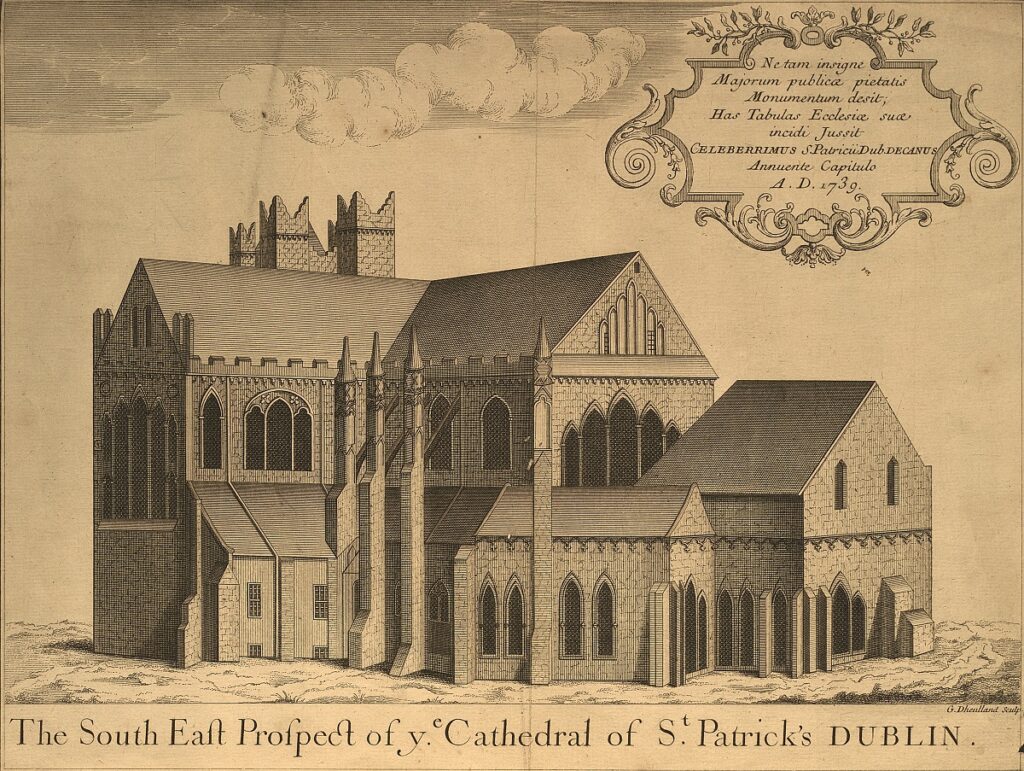
While the provenance of the collection is unknown, the source of many of the individual prints can be traced. The majority of items have been extracted from illustrated history and travel books, such as N.P. Willis’ The scenery and antiquities of Ireland, Thomas Cromwell’s Excursions through Ireland, and S.C. Hall’s Ireland, its scenery, character, etc., or serials, such as Copper Plate Magazine, Gentleman’s Magazine and Illustrated London News. Among the oldest items in the collection are prints from the first volume of The whole works of Sir James Ware concerning Ireland, published in 1739. Sir James Ware (1594-1666) was an Irish MP and antiquarian with the volume tracing the ecclesiastical history of Ireland. Originally written in Latin, the English edition was translated by Walter Harris (1686-1761). Depicted above is the south east prospect of St. Patrick’s Cathedral in Dublin. Other prints from the volume include Christ Church Cathedral in Dublin and St. Columb’s Cathedral in Derry.
Print creators and techniques
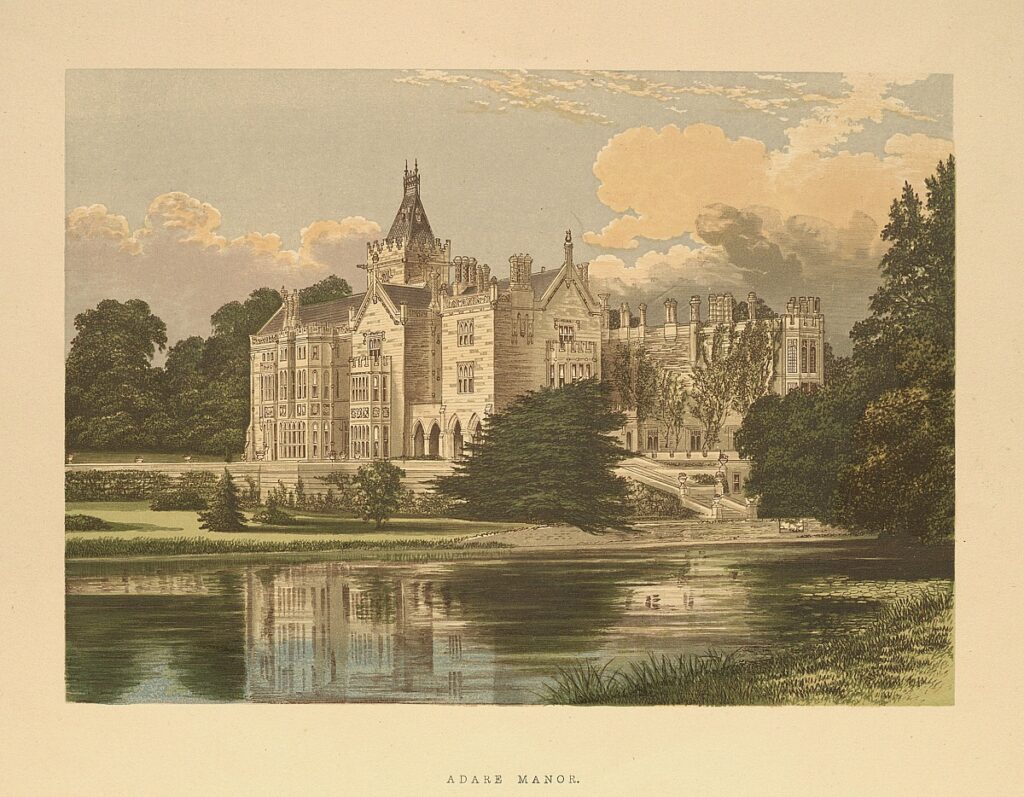
The prints represent the works of many notable artists and engravers of the period, including the artists Paul Sandby (1731-1809), George Petrie (1790-1866), and William Henry Bartlett (1809-1854). In terms of printing methods, the collection contains a selection of engravings, lithographs, chromolithographs and aquatints. The above chromolithograph of Adare Manor in County Limerick is from Francis Orpen Morris’ A series of picturesque views of seats of the noblemen and gentlemen of Great Britain and Ireland. The work was originally published in six volumes from 1866-1880 and contains an extensive collection of colour prints, each accompanied by a historical and descriptive letter press (printed text). Other locations extracted from Morris’ work include Ardtully in Kerry, Dromoland in Clare and Bishop’s Court in Kildare.
Prints of familiar places…
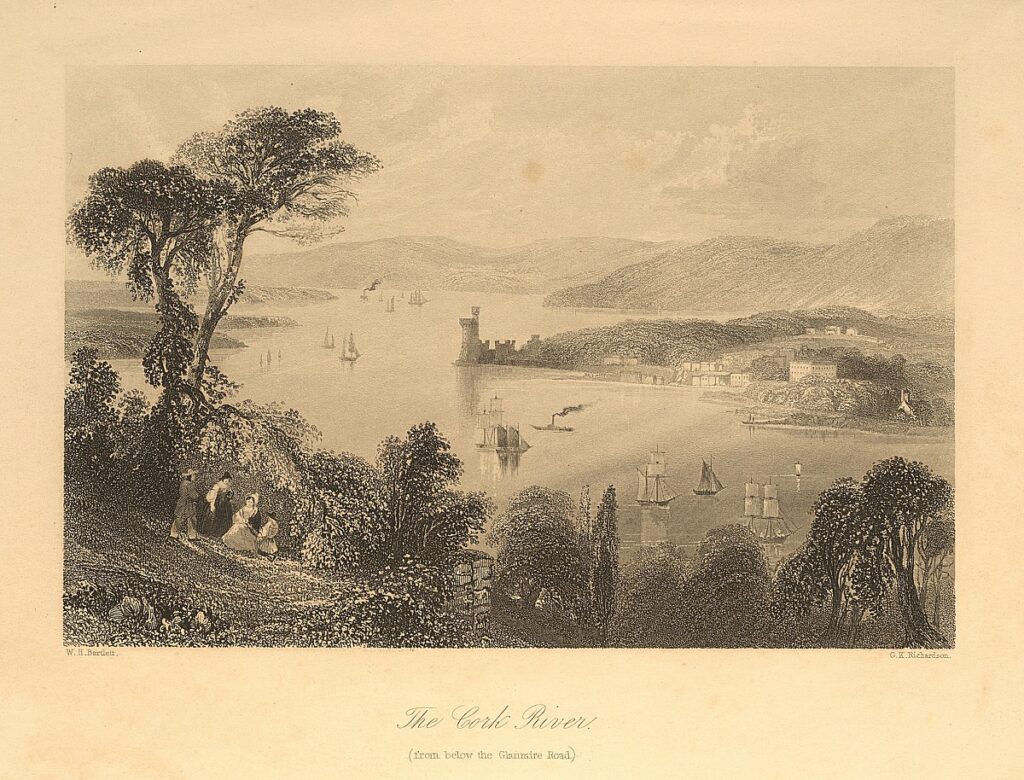
The prints provide an important visual record of the Irish landscape, offering unique perspectives on many familiar (and some not so familiar) locations. Among the Munster material are 24 prints relating to County Cork, including images of Bantry, Blackrock Castle, Blarney Castle, Cobh Harbour, Cork Harbour, Glengariff, and Youghal Abbey. The above image, providing a striking view of Blackrock Castle on the bank of the River Lee, is from the second volume of The scenery and antiquities of Ireland, published in 1842. The text by J. Stirling Coyne accompanying the image provides a similarly compelling account of the scene:
The Castle of Black Rock, a conspicuous and beautiful object, as we approach the city, is picturesquely situated on the extremity of a peninsula. It was originally intended as a fortress for the defence of this part of the river, but the taste of the good citizens of Cork being more pacific now than formerly, the corporation have latterly converted it, at considerable expense, into a handsome structure, where they hold a court of Admiralty annually, and assemble at certain periods in summer for the discussion of the more important business of eating and drinking. Adjoining to the castle is a lofty tower, in which a light is exhibited at night for the guidance of vessels coming up the river. The shores on the right-hand increase in beauty as we proceed upward. Opposite to the village and castle of Black Rock, the romantic river of Glanmire mingles its waters with the Lee. From this point the hills are thickly clothed with woods, groves, gardens, parks, plantations, and tasteful pleasure-grounds. Handsome villas are seen peeping through the tufted trees in every direction; many of them splendid, and all picturesquely situated… – The scenery and antiquities of Ireland, Vol. 2, p. 88.
…forgotten places…
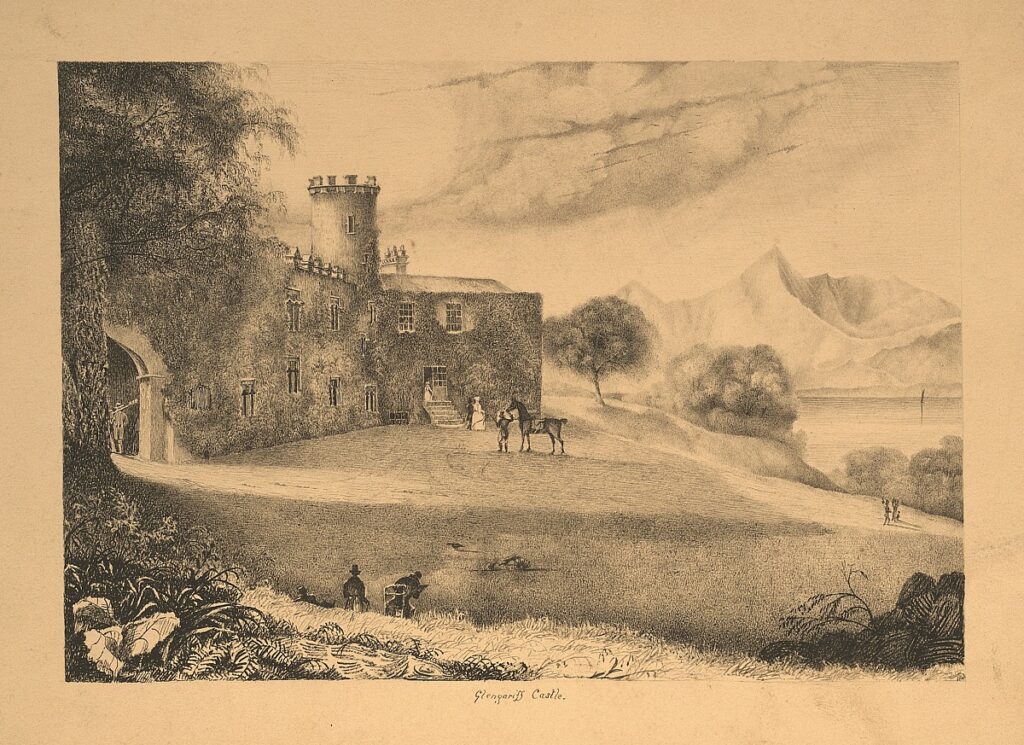
A particularly intriguing aspect of the collection is its depiction of a changing landscape. While there are plenty of images of medieval ruins, there are also many examples of places that either no longer exist or have since fallen into disrepair. Examples include Dartrey Castle, Rossmore Castle and the Poulaphouca Waterfall, to name but a few. The above image is of Glengariff Castle, once home to the Earls of Bantry. The two storey gothic structure was originally built by Colonel Simon White, brother of the first Earl of Bantry, in the 1790s. Providing a panoramic view of Glengarriff Bay, it was later used as a hotel, hosting figures such as Yeats, Thackery and Synge. Today, it stands as a derelict ruin.
…and other items
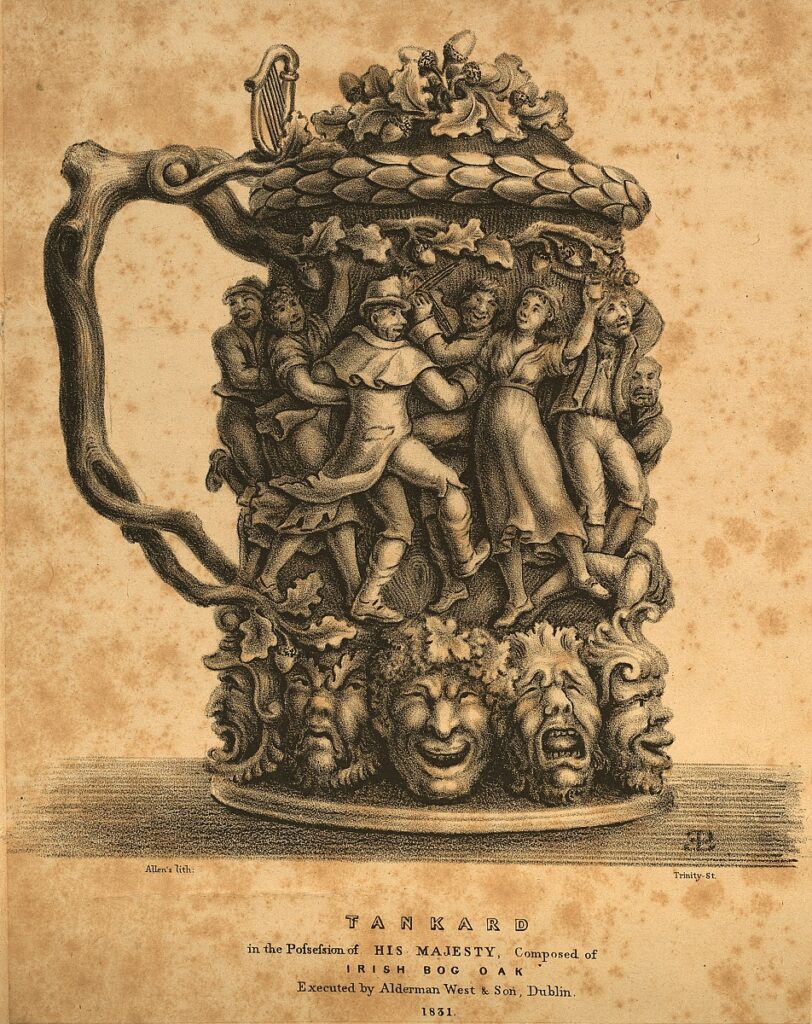
That said, not all of the prints are in fact topographical. The collection also includes a small number of prints of people and objects. Above is one of the more unusual subjects. It is a lithograph of a tankard made from Irish bog oak carved by Edward Lorenzo Percy. The carving depicts reveling people at the Donnybrook Fair in Dublin above a series of grotesque faces. The lid is carved with oak leaves and acorns, while the handle is in the form of a branch with a harp thumb piece. As the caption on the print suggests, the tankard is part of The Royal Collection and was presented to Willaim IV by the Marquess of Anglesey.
Further details on the Topographical Prints Collection, including the complete listing, can be found on the Special Collections’ Cartographic Visual LibGuide.
Bibliography
Cromwell, Thomas, Excursions through Ireland: comprising topographical and historical delineations of each province; together with descriptions of the residences of the nobility and gentry, remains of antiquity, and every other object of interest or curiosity. Forming a complete guide for the traveller and tourist. Illustrated with … engravings. (London : Printed for Longman, Hurst, Rees, Orme, and Brown; [etc., etc.], 1820.)
Elmes, Rosalind M., Catalogue of Irish topographical prints and original drawings. (Dublin: Malton Press for National Library of Ireland Society, 1975)
Hall, Samuel Carter, Ireland : its scenery, character, &c. (London: Hall, Virtue, and Co., [1841-1843]).
Morris, Francis Orpen, A series of picturesque views of seats of the noblemen and gentlemen of Great Britain and Ireland. (London: William Mackenzie, 1866-1880).
Ware, Sir James, The whole works of Sir James Ware concerning Ireland : revised and improved. In three volumes. … Embellished with copper plates. (Dublin: Printed for the author, by E. Jones, 1739-1746).
Willis, Nathaniel Parker, The scenery and antiquities of Ireland. (London: G. Virtue, [1842])
